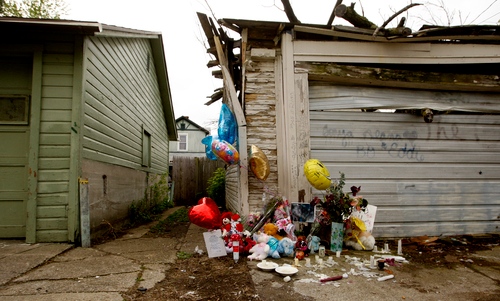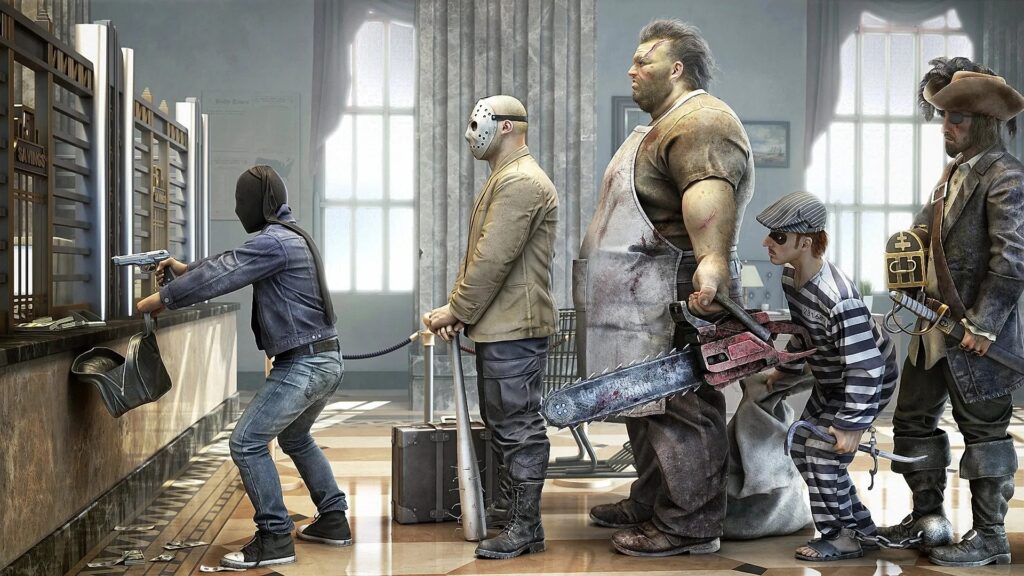Heather Walker was only eighteen years old when she disappeared on February 9, 2008 from the Dayton area. Earlier in the day, she had attended her brother’s birthday party, a small affair for family and close friends. Everyone was glad to see her there because a couple weeks prior, she had undergone a surgical procedure for cervical cancer and had not felt like doing much since. She did leave the house with a bottle that had five Vicodin in it, just in case the pain got worse. At some point after eleven o’clock, she left the party. A friend driving by Sam’s Market on East Third Street happened to see her as they drove past. The next morning, they called Heather’s mother, Tammy, asking if she had made it home okay only to learn that she was the last person that saw Heather before she disappeared, as far as we know…
Missing Runaway?


The morning after Heather didn’t come home, her mother called the Dayton police to report her missing. While the police did file the missing person report, that was the extent of it. Heather, they said, had run away six times in the past and eventually came home. Also, Heather was past her eighteenth birthday, meaning she was now legally an adult, and could just walk away from her life for a time if she wanted to. Since there was no evidence that a crime had been committed, there was nothing they could do.
But for Heather’s mother Tammy, there were things she could do. Several times in the past when Heather had run away, she had gone to visit the father of Heather’s now two year old child. However, when Tammy called and looked for her there, she was nowhere to be found and the man claimed not to know where she was. Back at home, Tammy made posters that got distributed around the neighborhood, asking anyone to call if they had any information on where Heather might be.
For the next eleven weeks, there was nothing. Heather had completely disappeared.
Eleven Weeks Later…
On April 26, 2008, all Wilburn Gibson wanted to do was walk to work. As he was walking down Third Street (a few blocks from Sam’s Market) he said he heard a woman screaming. The story goes that the woman was doing some crack in the alleyway just off Jerzey when she saw what she thought were a pair of sneakers in the trash. When she went to get them, she discovered a female’s body, upside down in the trash can. Gibson called the police who arrived on the scene moments later.
Almost from the start, police realized that the body in the trash can probably belonged to Heather Walker because the victim was wearing the same (or, at least similar) clothing to what Heather wore when she disappeared. (Her identification and that little bottle of pills, however, were never found.) This was confirmed moments later when Tammy Walker broke through the police tape and viewed the body in situ. She confirmed that the body was, in fact, her daughter.
The scene was notable for several reasons. First, the body was found in a city-owned trash can, placed behind an abandoned house. The trash can belonged to an address several houses away, and it is believed that the can had moved within three days of the body being found. Investigators also found it interesting that the body was upside down, with her feet near the top of the can. On top of the body was other trash, although nothing that could point anyone toward any suspects (things such as fast-food containers.)
The body was also in an advanced state of decomposition, which made it hard to determine the time or cause of death, however manner of death was determined as homicide (someone had to put the body in the trash can after all).
The fact that they could not determine even the time of death raised several issues. It had been eleven weeks between the time she had last been seen alive, and the time her remains were found – and nobody knew where she was all that time.
Theories and Suspects
Detectives initially believed that Heather died from an overdose of some drug or another, however this was ruled out when the toxicology results came back. When the coroner examined the body, he looked for signs of trauma, such as a head wound or any indication the body had been stabbed or strangulated, but he could find no evidence of violence anywhere.
Heather Walker’s official cause of death has always remained “Undetermined”.
Police began interviewing a lot of people, starting with family, then her friends, but barely branching out from there. (For example, several people have been critical of the Dayton Police for not interviewing the employees who were at work at Sam’s Market the night Heather was seen there by friends, or checking to see if there was security video.)
When Heather had gotten pregnant approximately three years before her death, she began taking her high school classes online, which she continued to do after giving birth, however she was still able to maintain her friendships with other kids from school, often seeing them around the neighborhood. Many of these kids were interviewed by the police, however they seemed to produce no leads, except for one student, Amy. While the details are a bit unclear, we know she was interviewed by the police, and when the police wanted to interview her a week later, they discovered the entire family had moved out of state. Without knowing further details, this makes Amy (or her family) look very suspicious as many have speculated that she was involved and wanted to move far away to avoid being further questioned, but there isn’t enough public evidence to support that theory for now.
Another temporary person of interest was Heather’s mother, Tammy. The police had received a tip pointing the finger of blame at her and she was questioned by the police. Even though Tammy was quickly cleared, the fact that she was even questioned in the first place didn’t seem to sit well with her. She had been somewhat critical of both the police and the news media before being questioned, her complaints seemed to grow.
Police, The Press, and The CSI Effect
By all accounts, Tammy Walker was a grieving mother, and it is easy to see how she could think the police weren’t doing enough to solve her daughter’s murder. She was also very critical of the local news coverage, or the lack thereof. The press, she said, weren’t covering Heather’s disappearance and murder enough, especially in the early days. When something did appear in the papers, they would often include information that painted Heather in some rather unflattering light, which Tammy often took umbrage to.
The question is … did she have a point?
In 2004, USA Today helped coin a new term, The CSI Effect, which refers to the way that people in real life often misunderstand law enforcement, forensics, or the criminal justice system because of what they see on programs like CSI: Crime Scene Investigation (and the spinoffs like CSI:NY and CSI: Miami) but other shows like those in the NCIS and Law & Order franchises certainly contributed too.
Most examples of The CSI Effect focus on juries who jump to (often erroneous) conclusions because what is presented in court is not how things happen on those CSI shows. While nearly all of them did (do) have technical advisors whose goal it is to make things as accurate as possible, certain liberties must be taken regardless (such as instant DNA test results on the shows, despite them taking weeks to perform in real life – the plot needs to move forward you know).
While I have not talked to Tammy Walker myself, or anyone else immediately connected to the case – I wonder how much of her attitude comes from The CSI Effect.
East Dayton, the area the Walkers lived in, was known at that time as being a very rough part of town. There was a huge problem with everything from robberies and gangs to drugs and prostitution and violence seemed to be a part of daily life for many, if not most residents. (This is not to suggest that the Walkers had anything to do with this, and I don’t mean to suggest that.) The reality of living in a neighborhood like that isn’t close to what we see on any of those police dramas on television. Elevated levels of crime often mean that police departments struggle to do what they can, and crimes rarely come to a swift conclusion, if they are solved at all. In the perfect CSI world, every murder or burglary or violent assault will be solved within the hour.
I, personally, see nothing wrong with the police following up with a tip suggesting that Tammy killed her daughter. It is what a good detective would do. You follow all the leads that you can, and once something is ruled out, it’s time to move on. And that’s exactly what happened here. It’s only on CSI that a potential suspect is ruled out just because they’re the victim’s mother, unless they’re the actual guilty party (and played by an actress you’ve seen in a bunch of other things before.)
In the press, Tammy tried to paint her daughter as a “sweet little angel” who was loved by everyone she ever met. She called her daughter a “good girl” and she was unable to understand how someone could do something so vicious to her. This is how, I imagine, all parents view their kids.
To an outsider, the view of Heather was a bit different. Being an eighteen-year-old mother of a two-year-old meant that she gave birth at sixteen, which meant she got pregnant at fifteen. I say this not to slut shame Heather or pass any judgement on her character, but to point out the realities of teenage motherhood and the difficulties she must have faced.
Some of the people who knew Heather said that she had been using drugs, which her mother expressly denies. Regardless, Heather had been in trouble with the law a few times in the recent pass. There had been at least one charge of shoplifting, and another set of charges when she was found in a car that had been reported stolen, even though she was not responsible for the auto theft, nor was she driving, she was still found guilty of being in possession of that stolen car.
I say this not to demean her character, but to help paint a better picture of what Heather was like. No victim of any crime is ever to blame for what happens to them.
When Tammy first tried to report Heather missing, she said she knew something was wrong because it wasn’t like Heather to disappear like that, pointing out how devoted she was to her son. She wanted the police to do more. However, there’s another side to this issue.
Heather was one of over a hundred people who were reported missing that month in Dayton, the vast majority of which were found with little to no police involvement. Even though she was still in High School, she was an adult and without evidence that Heather was a victim of a crime, there wasn’t much the police could do.
As for the press … it’s hard to pass judgement one way or another. With high crime areas (like East Dayton) it’s hard to know (except in retrospect) which stories need more attention (other than that they all do). Sadly, crime happening in a high crime area isn’t exactly newsworthy.
The Case Is Still Open
Officially, the Heather Walker case is still an active and open case with the Dayton Police Department. (So, if you happen to know something that can bring a conclusion to this case, I urge you to let them know.)
As far as I can tell, however, there have not been any developments since the case was first investigated. Heather’s friends and family continue to seek justice.



